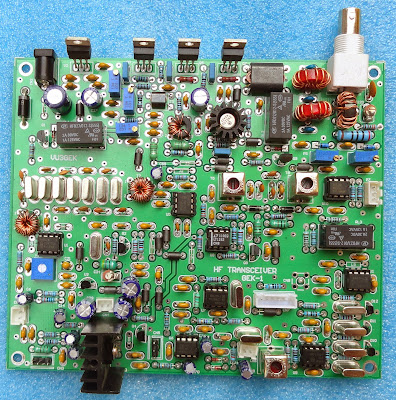We have featured the amazing homebrew work of PA3GSV before:
Jan is at it again, this time building a Dutch version of Lew McCoy's Mate for the Mighty Midget. Look at front panel! But wait, there is more!
Here is a side view of the chassis. Wow. What, you may ask, is that round thing?
Holy cow! Homebrew Vernier reduction drive made from the cap of a sewer pipe. And a homebrew dial cord arrangement. Jan is clearly breaking new ground in ham radio homebrew re-purposing.
Jan writes:
Bill:
Here a little update on the MMrx.
Got almost all the parts, except for the Miller 4411 300 uH coils, for which I am attempting to make my own.
While I was looking for some pictures of this coil, if it was shielded or not (found a vintage online Miller catalogue J ),
I stumbled across this article, the W2MQ “Hamster”
There is no mention of the MMrx, but the text is very in line with the latter. Nice read.
Also while looking for parts, I saw this supplier of FT-241 xtals who sell for reasonable prices ($10) .
Maybe you already know this company:
Vernier drive 1:19
The drum is made from a sewerage end cap got from the hardware store.
Still under construction J
Added a front control to switch the BFO on/off, together with another crystal or some arrangement to make AM (broadcast) reception possible.
I want to try a regen detector instead of the 2 germanium diodes, followed by a pentode for some more audio output.
Regen and AF gain control are also at the front.
In your video it looked like there was a screwdriver sticking out of the BFO oscillator coil, a trigger to put this control on the front as well J
As there is no AGC, the (S) meter will measure the plate current of the RF amplifier tube.
So, a lot of experimenting to do, and still busy with some of the mechanics.
73 Jan






























